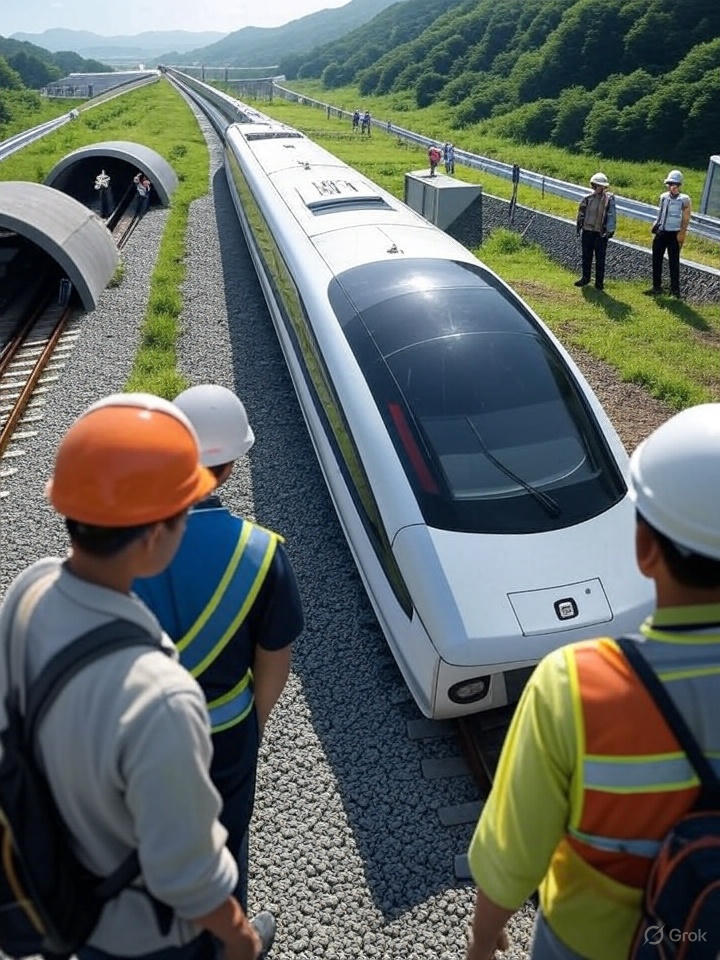On August 14, 2025, significant progress has been reported on the Kina Supertrain project, a high-speed magnetic levitation (maglev) train designed to reach speeds of 1,000 km/h (621 mph) using a vacuum-tube system. This week, China Aerospace Science and Industry Corporation (CASIC) conducted successful tests in Shanxi province, achieving controlled navigation and stable suspension over a 2-kilometer low-vacuum pipeline. The train maintained a maximum speed within preset values, with suspension heights consistent and movements aligning with theoretical trajectories. Earlier trials in late 2024 reported speeds nearing 1,000 km/h, supported by a breakthrough in reducing tunnel boom noise by up to 96% using 100-meter porous buffers at tunnel entrances. This innovation addresses pressure waves caused by high-speed travel, enhancing safety and structural integrity. The project, initiated in Yanggao County in 2022, involves a 9 trillion yen ($64 billion) investment, with 260 kilometers of the planned 447-kilometer Tokyo-Nagoya route completed by Central Japan Railway Company (JR Central). Additional tests are planned, including a 10-kilometer urban loop by late 2025, aiming to integrate the technology into city settings. The initiative targets a 2027 opening, promising to revolutionize travel with reduced times, such as a potential 90-minute Beijing-Shanghai trip.
www.34news.online
www.34news.online

